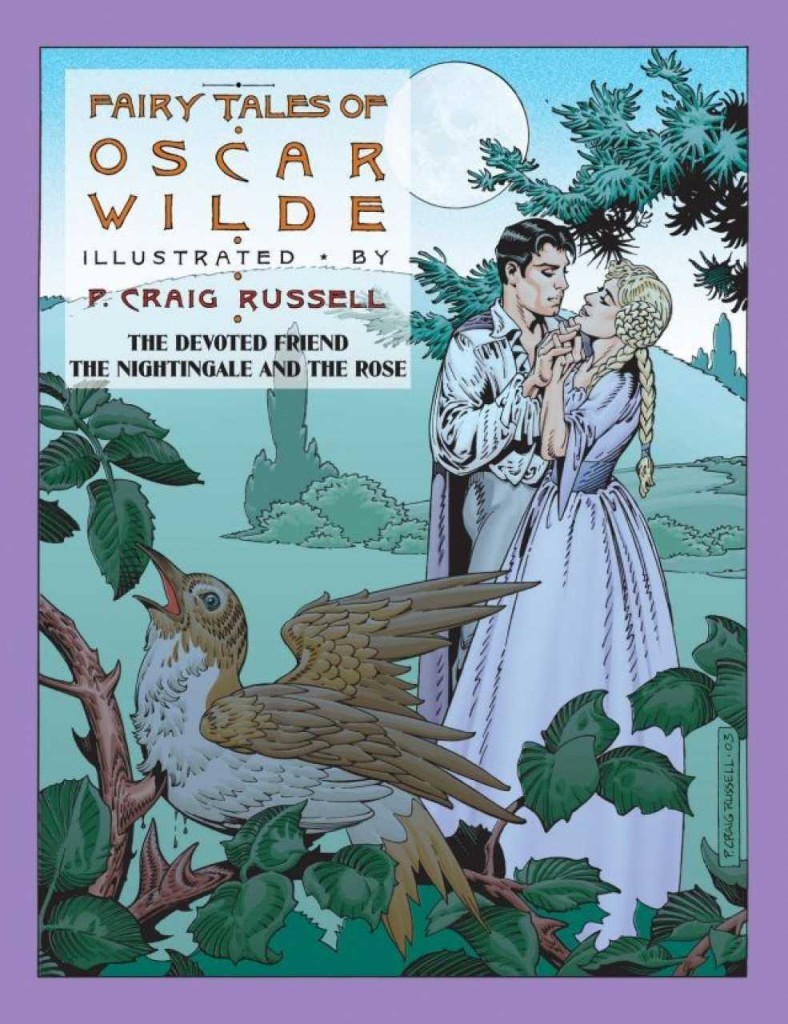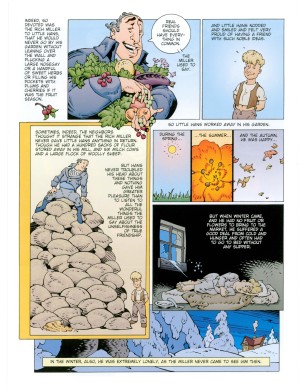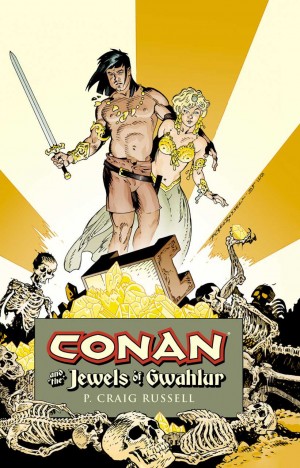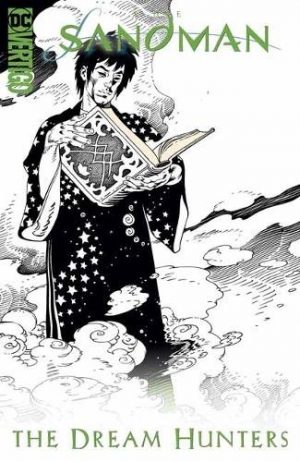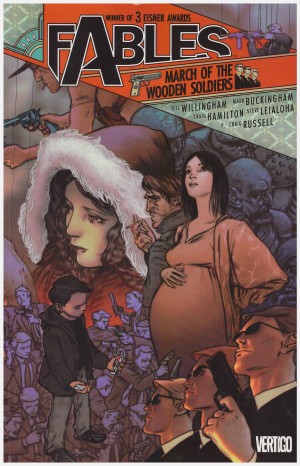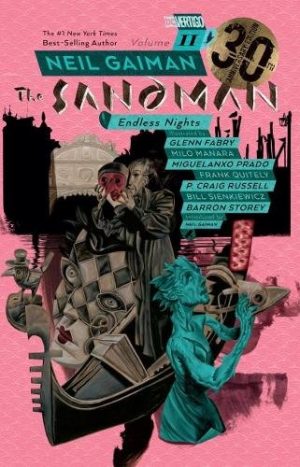Review by Ian Keogh
Oscar Wilde wrote nine fairy tales in total, and the appearance of this fourth graphic novel of adaptations from P. Craig Russell, six years after the last, indicated a plan to transfer them all to comic format. Eventually. Artistically this has been a great success to date, and we’re here presented with The Devoted Friend and The Nightingale and the Rose. They’re well matched, both bleak and with a broad cynical streak, yet very entertaining.
The former is the most blatant social commentary of Wilde’s fables, contrasting the wealthy and pompous Hugh the miller with Hans the gardener. Hans enjoys listening to the more erudite man expound on friendship, and doesn’t begrudge him the armfuls of flowers and herbs to which he helps himself from Hans’ garden. There is, however, not a shred of reciprocation. During the winter when Hans goes cold and hungry the miller’s justification for not inviting his alleged friend to share his food and fire is a desire not to induce envy as it would spoil his good nature.
It’s pointed, heartbreaking and very funny. Beyond that, it remains a sad commentary on how the entitled see themselves. Russell’s rendition of Hugh in all his finery is a monument to callous hypocrisy, with a permanently pasted smugness to his face. Here’s a figure to hate, yet Russell also engages our sympathies via an almost beatifically smiling Hans.
The Nightingale and the Rose begins with a beautifully pastiched fairy tale moment, of a lovelorn man in his garden bemoaning the lack of a red rose. His love will dance with him if presented with one, but he has none. This is overheard by a nightingale and the plot is in motion. Wilde casts the nightingale as the adjudicator of honest love, which is the emotion worthy of its song. It’s a variation of a formula used throughout his fairy tales of nature commenting on human wisdom or folly. These were written long before Disney’s cinema rendered this common currency, and even as talented an artist as Russell depends to some degree on the Disneyesque form in humanising his plants and animals.
What begins as straightforward takes a tragic turn as the nightingale, determined to help, learns of the one sure way of manifesting a red rose in winter, and the tale concludes with a flourish of casual cynicism. It’s related more to the earliest versions of fairy tales recounted by the Brothers Grimm than the sanitised cheer we know today.
Other than early in his career, Russell’s never worked on material that makes hot 100 lists. Has this impacted on his gorgeous art being under-appreciated? It’s to be hoped not. Much of his repertoire remains in print, and all is worth investigating by the art lover.
It should be noted that this a very brief book in graphic novel terms at only 34 pages, but those pages have greater value than some entire ten volume series. Only two further of Wilde’s fairy tales remained ungraced by Russell’s loving attentions, and a further eight years would elapse before his take on The Happy Prince was issued in 2012.
